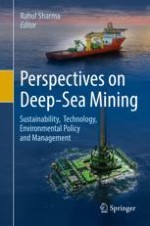2022 | OriginalPaper | Buchkapitel
18. An Evaluation of the Payment Regime for Deep Seabed Polymetallic Nodule Mining in the Area
verfasst von : Daniel Wilde
Erschienen in: Perspectives on Deep-Sea Mining
Aktivieren Sie unsere intelligente Suche, um passende Fachinhalte oder Patente zu finden.
Wählen Sie Textabschnitte aus um mit Künstlicher Intelligenz passenden Patente zu finden. powered by
Markieren Sie Textabschnitte, um KI-gestützt weitere passende Inhalte zu finden. powered by
